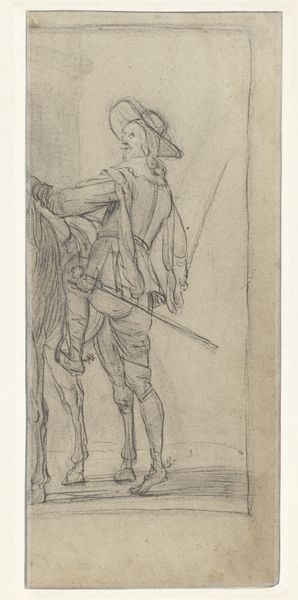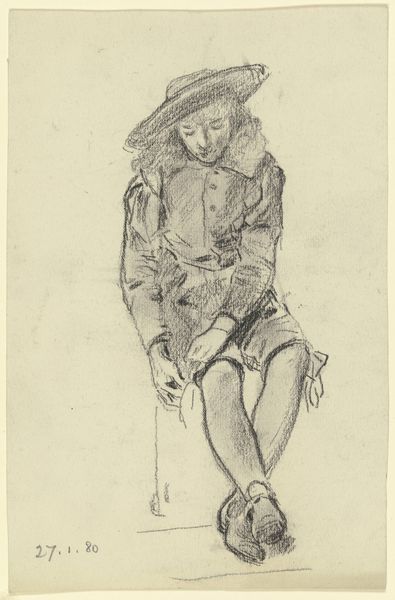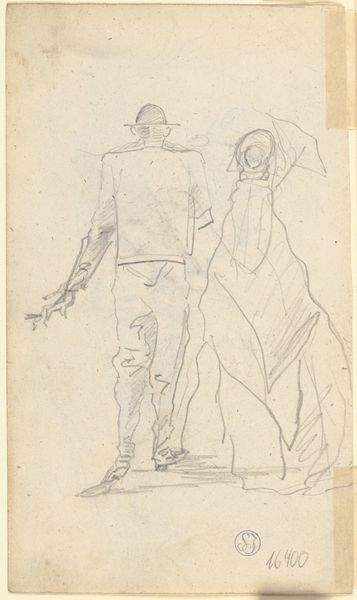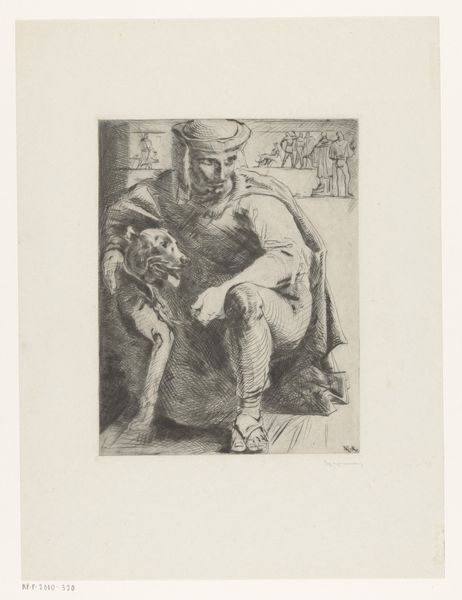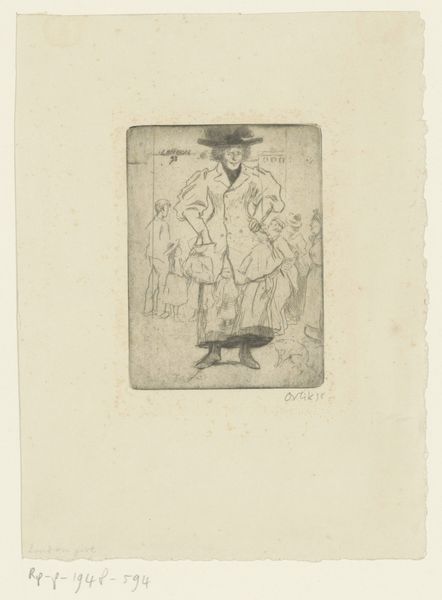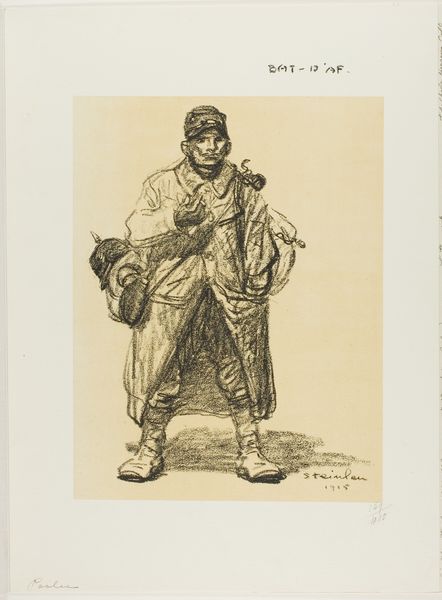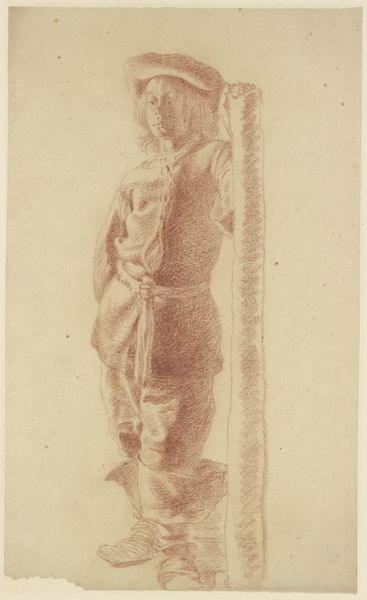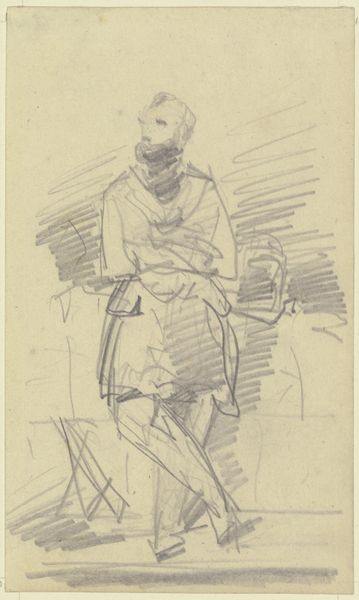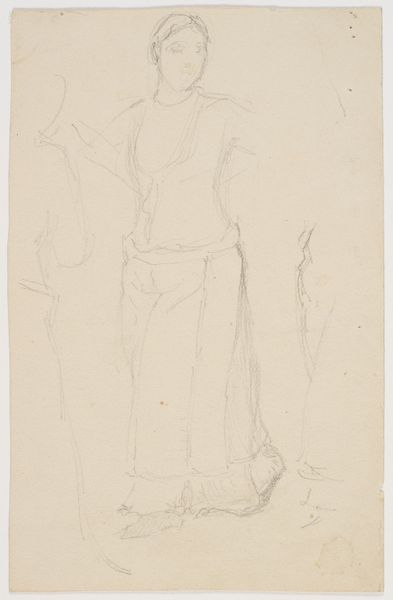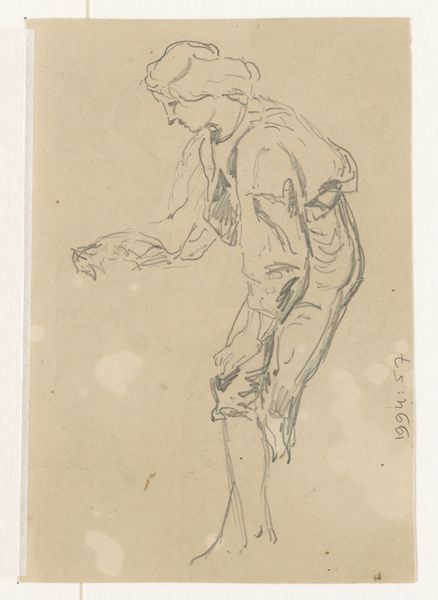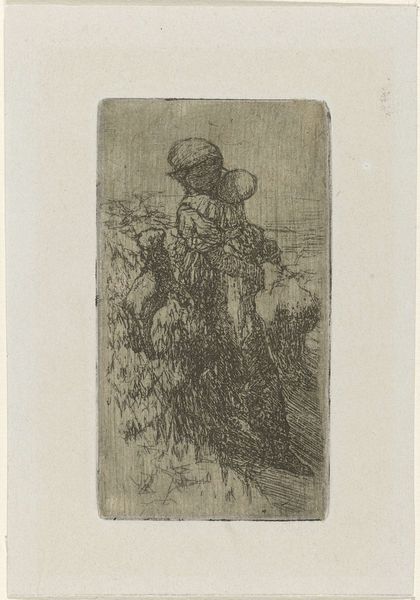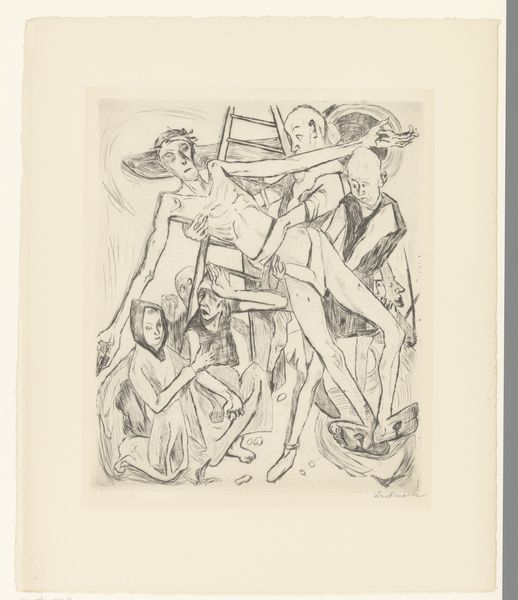
drawing, graphite
#
portrait
#
pencil drawn
#
drawing
#
light pencil work
#
yellowing background
#
dutch-golden-age
#
pencil sketch
#
mannerism
#
figuration
#
form
#
pencil drawing
#
line
#
graphite
Dimensions: height 420 mm, width 227 mm
Copyright: Rijks Museum: Open Domain
Editor: Here we have "Standing Man with Hand on Hip", a graphite drawing by Frans Hals, likely from sometime between 1590 and 1666. The figure looks so self-assured, almost theatrical. It’s just a sketch, but it’s got so much personality. What symbols or cultural echoes do you pick up on here? Curator: Immediately, the pose speaks volumes. That hand on the hip, combined with the sweeping hat and the somewhat nonchalant drape of the cloak, echoes a figure very conscious of his own social position. We see the confidence of a man familiar with the subtle language of status in Dutch Golden Age society, projecting an idealised self. Editor: So, you’re saying his pose isn’t accidental? Curator: Absolutely. Every detail contributes. Consider how the sketch itself plays into this. A drawing like this might have functioned as a study, but in its own way, it signifies spontaneity, even nonchalance. The rapid lines imply ease and mastery, further enhancing this man's projected image. Editor: It’s like a performance of status through clothing and body language. Does the yellowing of the paper change how we perceive that? Curator: Inevitably, the yellowing of the paper lends an air of antique dignity, adding a layer of veneration to this carefully constructed self-image. The portrait doesn’t just show an individual; it evokes a cultural memory, where even a casual pose can be a declaration. Does that reading resonate with your initial sense of theatre? Editor: It does. The theatricality isn’t just performance, but also preservation – this drawing helps preserve and communicate those visual codes of status across centuries. I had not considered how the drawing material or aging of the paper participates in constructing meaning. Curator: Indeed. Understanding visual symbols allows us to access the continuous, often unspoken, narratives that shape cultural identity.
Comments
No comments
Be the first to comment and join the conversation on the ultimate creative platform.
